Link Between Zionism & Masonry: The Decline of Western Civilization
Warning: Sensitive Material
The rise of the European caste system
When
we look at human civilization throughout history and across the globe,
most humans have been born in some kind of caste system. The most
notable features of a caste system are endogamy (marriage only within
the same group) and the hereditary transmission of occupation, social
status and political influence.
In
its early stages, a caste system typically has only three castes. The
first caste is a priest caste. They are believed to have exclusive
access to sacred knowledge and define the social norms and rules for all
members of a community. The second caste is a warrior caste. They are
trained from an early age onward in various military skills and have the
exclusive duty to protect the community from any threat. The third
caste is a caste of commoners, which consists of pretty much everyone
else.
At later
stages, specialization leads to the develop of sub-castes that
sometimes become a caste of their own. Bureaucrats, artisans, merchants
and pariahs typically don’t fit well into one of the three main castes
and in some cultures become a caste of its own.
Centralisation of power

At
the dawn of the Renaissance, European power had increasingly become
dominated by two aristocratic houses. One was the House of Habsburg that
continuously occupied the throne of the Holy Roman Empire between 1438
and 1740 and also produced kings of Bohemia, England, Germany, Hungary,
Croatia, Ireland, Portugal, Spain, as well as rulers of several Dutch
and Italian countries.
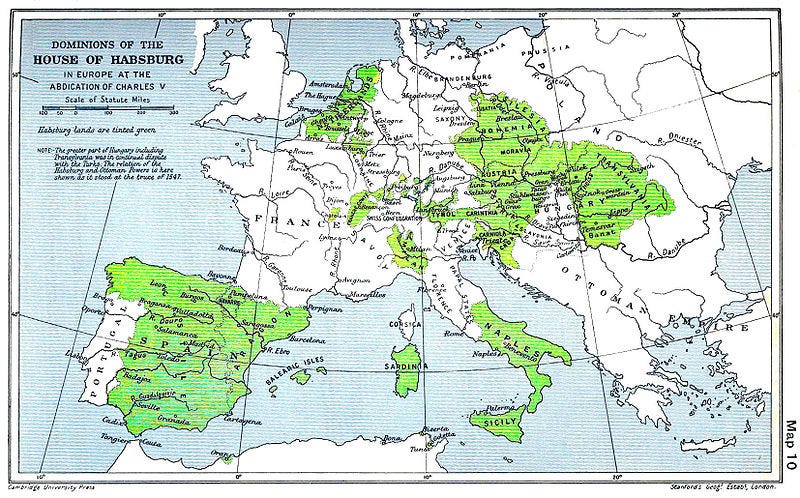
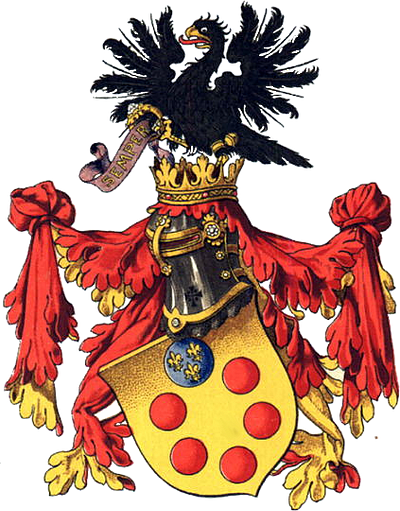
The
other house was the House of Medici. Their bank was the largest in
Europe during the 15th century, seeing the Medici gain political power
in Florence. While officially they remained citizens rather than
monarchs, the Medici produced four Popes of the Catholic Church — Pope
Leo X (1513–1521), Pope Clement VII (1523–1534), Pope Pius IV
(1559–1565), and Pope Leo XI (1605); two regent queens of
France — Catherine de’ Medici (1547–1559) and Marie de’ Medici
(1600–1610); and, in 1531, the family became hereditary Dukes of
Florence. The Medici Bank was one of the most prosperous and most
respected institutions in Europe. There are some estimates that the
Medici family were the wealthiest family in Europe for a period of time.
From this base, they acquired political power initially in Florence and
later in wider Italy and Europe.
Illuminati The Freemasonry and Zionism - The Master Plan To Rule The World
The fall of the European caste system
As
time progressed, a new caste of merchants, bankers and bureaucrats
developed to help maintain and expand the empires of both aristocratic
houses. The increased dependence of these and other aristocrats on the
services of this new caste, allowed them to increase their wealth and
power. This in turn resulted in the gradual decline of both houses, with
the House of Medici eventually dissolving in 1737 and House of Habsburg
in 1780.
Out
of the new caste of merchants, bankers and bureaucrats, various houses
competed with the weakened aristocrats to fill the power vacuum created
by the decline of the two aristocratic houses. Elite clubs like masonic
lodges of reading societies brought together men of affluence who lacked
an aristocratic title and were fed up with the incompetence of the
weakened aristocrats.
In spite its elitist nature, Freemasonry calls “Liberty”, “Equality”, “Fraternity”, “Tolerance” and “Humanity” its five keystones,
which spread across the Western world and would fuel two revolutions by
the end of the 18th century: the American revolution in 1776 and the
French revolution in 1789. These revolutions effectively destroyed the
traditional European caste system, replacing it by a new kind of
hierarchy based only on the private ownership of capital.
Not only was the slogan “Liberté, égalité, fraternité” explicitly used during the French Revolution, it is still used as an official slogan of the French government.
The king is dead, long live the king!
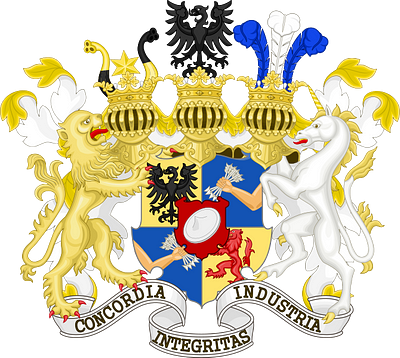
In
this new hierarchy, one house would soon stand out among all others.
That house was the House of Rothschild. The Rothschild family is a
family descending from Mayer Amschel Rothschild, a court Jew to the
Landgraves of Hesse-Kassel, in the Free City of Frankfurt, who
established his banking business in the 1760s. Unlike most previous
court Jews, Rothschild managed to bequeath his wealth, and established
an international banking dynasty through his five sons.
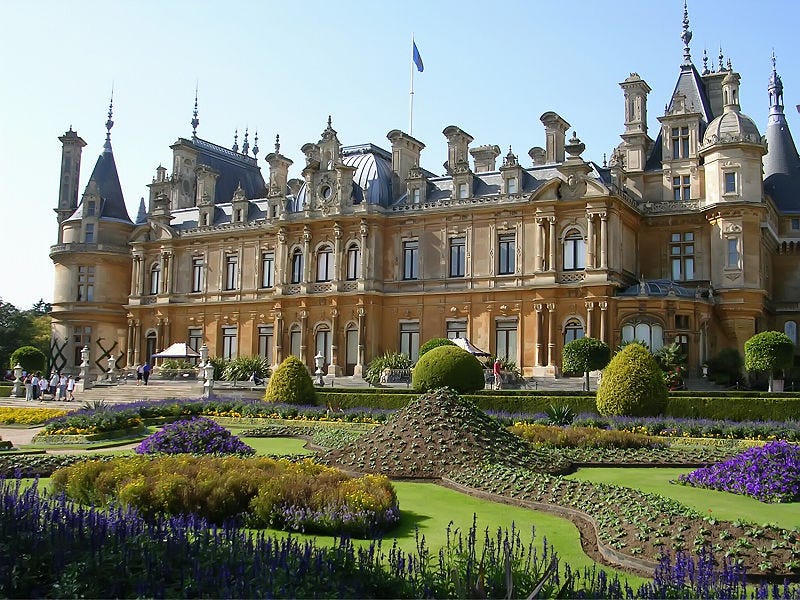
one of numerous manors, castles, and palaces owned by the Rothschild family
During
the 19th century, the Rothschild family had by far the largest private
fortune in the world. Their wealth and power easily surpassed that of
the House of Habsburg and the House of Medici combined. Officially, they
lost most of their wealth and power during the 20th century, but many
believe that the family has just become better at marking their fortune
from prying eyes, using straw men to funnel their money through various
corporations as well as non-profit organisations.
Whether
the Rothschilds really did just get better at hiding their funds or
whether they did in fact lost much of it during the 20th century, the
most important people in politics and business today still can’t do
anything without approval by the Rothschild family.
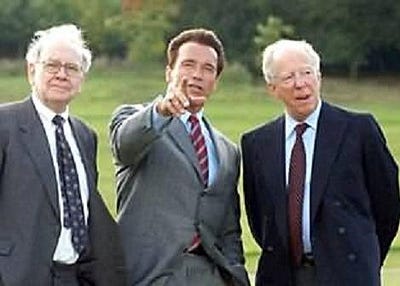
For
example, Jacob Rothschild, 4th Baron Rothschild, is a member of a
British branch of the Rothschild family. He maintains strong personal
and business links with Henry Kissinger. His country estate has been a
regular venue for visiting heads of state including Presidents Ronald
Reagan and Bill Clinton. Margaret Thatcher received French President
François Mitterrand there at a summit in 1990. He hosted the European
Economic Round Table conference in 2002, attended by such figures as
James Wolfensohn, former president of the World Bank, Nicky Oppenheimer,
Warren Buffett and Arnold Schwarzenegger. In 2003 Rothschild came under
scrutiny when Russian oil industrialist Mikhail Khodorkovsky’s shares
in YUKOS passed to him under a deal they concluded prior to
Khodorkovsky’s arrest. And that’s just a tip of the iceberg.
The Messianic agenda
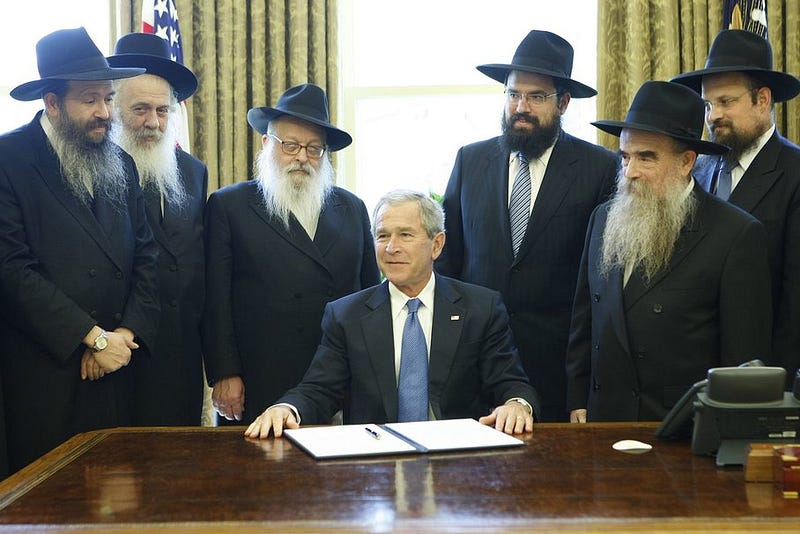
According to Jewish tradition, the Jewish Messiah is to bring the world into the Messianic Age:
an era of universal peace and brotherhood on the earth, with a Jewish
king ruling the world. Since time immemorial, Jews have tried to prepare
the world for the Messianic age to this very day by various means. The
most influential among such organisations is B’nai B’rith.
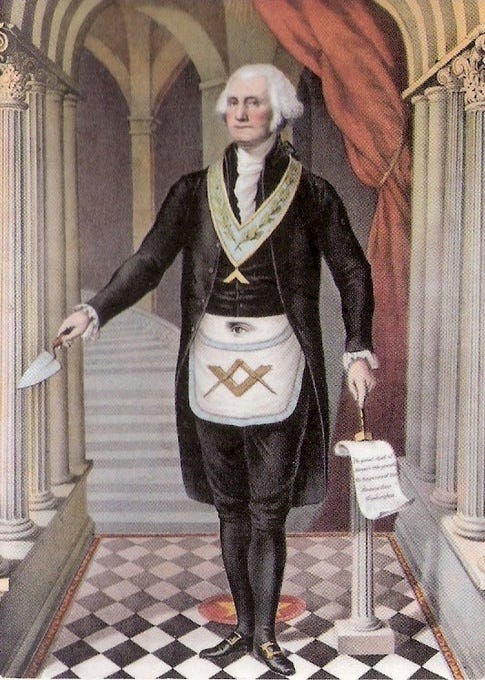
Dating back to 1843, B’nai B’rith is the oldest Jewish “service organization” in the world. Besides working openly as agents of Zionism,
they have cells that operate covertly as “secret societies” within
“secret societies”. As such, B’nai B’rith replaced the Bavarian Illuminati,
which was exposed during the 18th century as having formented both the
French and American revolution. An excellent source on the role of the
masons and Illuminati in these revolutions is the 1797 work “Proofs of a
Conspiracy against all the Religions and Governments of Europe” by
physicist, mathematician and philosopher John Robison.
Membership
of B’nai B’rith is exclusively Jewish. Its openly professed aim is
“uniting and elevating the Sons of Abraham”. It is best known for having
founded the Anti-Defamation League (formerly known as the “Anti-Defamation League of B’nai B’rith”). As the propaganda
arm of B’nai B’rith, the ADL describes itself as “the nation’s premier
civil rights/human relations agency”, stating that it “fights
anti-Semitism and all forms of bigotry, defends democratic ideals and
protects civil rights for all,” doing so through “information,
education, legislation, and advocacy.” What that means, is that they
actively fight against anyone who could undermine B’nai B’rith’s agenda
by indoctrinating the masses and demonizing dissident voices.
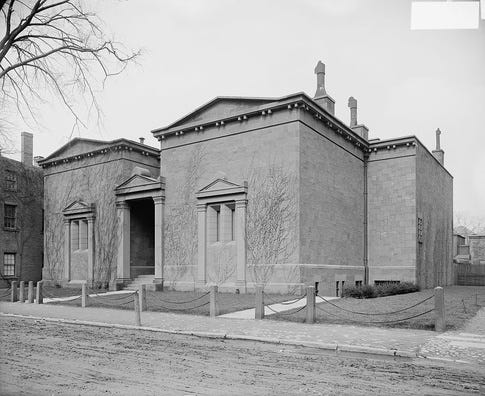
Influential “secret societies” dominated by B’nai B’rith include were Oddfellows and Freemasons. In later decades, these were complemented by organisations like Rotary International, Skull and Bones and the Bohemian Club. These organisations use mostly Philo-Semitic “Shabbos goy”
as agents for the B’nai B’rith agenda. This was discovered during early
the 20th century, when masonic lodges became illegal in several
countries and their archives were confiscated.
The
goal of the covert agenda within “secret societies” is the
establishment and development of a covert aristocracy operating behind
the scenes of an illusionary pseudo-egalitarian “democracy”, with the
Jewish Rothschild banking dynasty at the top of the hierarchy. This, they believe, will bring the world into the Messianic age.
The
goal of the open (Zionist) agenda is the creation and maintenance of
the state of Israel as a spiritual capital for this covert aristocracy,
but also as a refuge for any member of the B’nai B’rith network who’s
threatened by those he’s operating against.
All that has been done on earth against “the noble,” “the powerful,” “the masters,” “the rulers,” fades into nothing compared with what the Jews have done against them; the Jews, that priestly people, who in opposing their enemies and conquerors were ultimately satisfied with nothing less than a radical revaluation of their enemies’ values, that is to say, an act of the most spiritual revenge.— Friedrich Nietzsche
Why are the Jews hated? It is the inevitable result of their laws; they either have to conquer everybody or be hated by the whole human race . . .— Voltaire
The Jews have practiced usury since the time of Moses, and oppressed the other peoples. Meanwhile, the Christians were only rarely usurers, falling into disgrace when they did so. We ought to ban the Jews from commerce because they abuse it . . . The evils of the Jews do not stem from individuals but from the fundamental nature of this people
— Napoleon Bonaparte, 1806, speech before the Council of State
The new aristocracy
By
the end of the 19th century, the rule of the Rothschild dynasty was
almost complete in most of the Western world. While men like Cecil Rhodes, Alfred Milner, ‘Colonel’ Edward Mandell House, Andrew Carnegie, Cornelius Vanderbilt, John Davison Rockefeller, John Pierpont Morgan and Ernest Oppenheimer publicly controlled most of the North-American and Western-European economy, behind them was always Rothschild money.
Since I entered politics, I have chiefly had men’s views confided to me privately. Some of the biggest men in the United States, in the field of commerce and manufacture, are afraid of somebody, are afraid of something. They know that there is a power somewhere so organized, so subtle, so watchful, so interlocked, so complete, so pervasive, that they had better not speak above their breath when they speak in condemnation of it.
They know that America is not a place of which it can be said, as it used to be, that a man may choose his own calling and pursue it just as far as his abilities enable him to pursue it; because to-day, if he enters certain fields, there are organizations which will use means against him that will prevent his building up a business which they do not want to have built up; organizations that will see to it that the ground is cut from under him and the markets shut against him. For if he begins to sell to certain retail dealers, to any retail dealers, the monopoly will refuse to sell to those dealers, and those dealers, afraid, will not buy the new man’s wares.
[ … ]
The government, which was designed for the people, has got into the hands of the bosses and their employers, the special interests. An invisible empire has been set up above the forms of democracy. — Woodrow Wilson , The New Freedom (1913)
Karl Marx
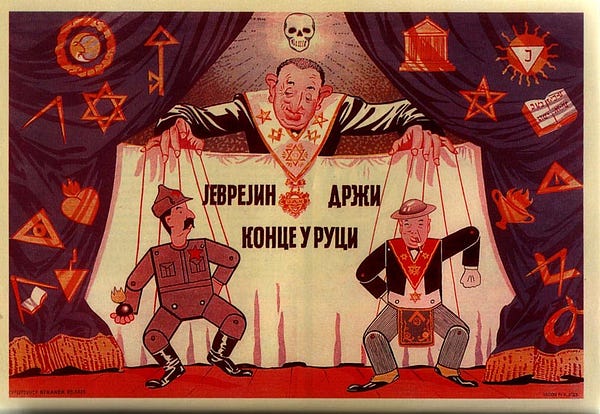

With
the rise of the shadow aristocracy, conditions for the working class
were getting worse and worse. Not only were women forced to leave their
households and join their husbands in the factories, but they even were
forced to send their children to maintain a standard of bare
subsistence. The working class started to revolt, demanding better
wages, voting rights and other ways to improve their quality of life.
As the son of a Rabbi, Karl Marx
was very familiar with the Messianic agenda. In spite of what most
people might think, Marx and the banking elite have always been on the
same side. The ideology that would be named after him was, in fact,
actually just a refinement of the egalitarian teachings perpetuated
already by the “secret societies” mentioned hereabove, using them as a
model for social control.
Karl Marx was a proponent of two principles, the first applied to socialism and the second to an advanced communist society: “To each according to his contribution” and “from each according to their ability; to each according to their need”. Marx’s position is often confused or conflated with distributive egalitarianism,
in which only the goods and services resulting from production are
distributed according to a notional equality; but in reality Marx
eschewed the entire concept of equality as abstract and bourgeois in
nature, focusing instead on more concrete principles such as opposition
to exploitation on materialist and economic logic.
Himself a Jew, Marx has around him, in London and France, but especially in Germany, a multitude of more or less clever, intriguing, mobile, speculating Jews, such as Jews are every where: commercial or banking agents, writers, politicians, correspondents for newspapers of all shades, with one foot in the bank, the other in the socialist movement, and with their behinds sitting on the German daily press — they have taken possession of all the newspapers — and you can imagine what kind of sickening literature they produce.
Now, this entire Jewish world, which forms a single profiteering sect, a people of bloodsuckers, a single gluttonnous parasite, closely and intimately united not only across national borders but across all differences of political opinion — this Jewish world today stands for the most part at the disposal of Marx and at the same time at the disposal of Rothschild. I am certain that Rothschild for his part greatly values the merits of Marx, and that Marx for his part feels instinctive attraction and great respect for Rothschild.
This may seem strange. What can there be in common between Communism and the large banks? Oh! The Communism of Marx seeks enormous centralization in the state, and where such exists, there must inevitably be a central state bank, and where such a bank exists, the parasitic Jewish nation, which. speculates on the work of the people, will always find a way to prevail ….
— Michael Bakunin, 1871, Personliche Beziehungen zu Marx
The two kinds of Marxism
After a dispute in the Russian Social-Democratic Labour Party between Vladimir Lenin and Julius Martov in 1904, the Marxist movement split into two factions : the Mensheviks and the Bolsheviks.
The Mensheviks subscribed to an Orthodox Marxist
view of social and economic development. They believed that socialism
could not be achieved in Russia due to its backwards economic
conditions. They believed it would need a bourgeois revolution similar
to the French and American revolution, then and then go through a slow
capitalist stage of development, again similar to the French and
American approach.
Mensheviks
believed true socialism was technically possible only after this long
capitalist phase as they believe it was a necessary condition for the
working class to develop the necessary consciousness required for a socialist revolution.
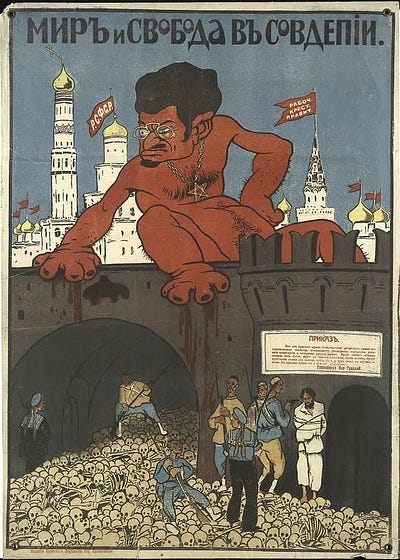
becomes a devil in this poster whose artist is
careful to point out Trotsky’s Jewish origins
Bolsheviks believed the capitalist state could and should be skipped. Instead, they proposed that a totalitarian Vanguard party
should take control of Russia by means of a socialist revolution and
use totalitarian means to enforce socialist principle onto the Russian
populace. They believed that a combination of indoctrination and force
was enough to transform Russia from feudal state to socialist state.
After
the Bolsheviks gained control of Russia, Menshevik ideology became
obselete in Russia. It was, however, still relevant in other parts of
the world. As Menshevik ideology gained a foothold in Europe and
North-America, it laid the foundations for a new ideology: that of the Frankfurt School.
International JewsIn violent opposition to all this sphere of Jewish effort rise the schemes of the International Jews. The adherents of this sinister confederacy are mostly men reared up among the unhappy populations of countries where Jews are persecuted on account of their race. Most, if not all, of them have forsaken the faith of their forefathers, and divorced from their minds all spiritual hopes of the next world.
This movement among the Jews is not new. From the days of Spartacus-Weishaupt to those of Karl Marx, and down to Trotsky (Russia), Bela Kun (Hungary), Rosa Luxembourg (Germany), and Emma Goldman (United States), this world-wide conspiracy for the overthrow of civilization and for the reconstitution of society on the basis of arrested development, of envious malevolence, and impossible equality, has been steadily growing. It played, as a modern writer, Mrs. Webster, has so ably shown, a definitely recognizable part in the tragedy of the French Revolution.
It has been the mainspring of every subversive movement during the Nineteenth Century; and now at last this band of extraordinary personalities from the underworld of the great cities of Europe and America have gripped the Russian people by the hair of their heads and have become practically the undisputed masters of that enormous empire.Terrorist JewsThere is no need to exaggerate the part played in the creation of Bolshevism and in the actual bringing about of the Russian Revolution, by these international and for the most part atheistical Jews, it is certainly a very great one; it probably outweighs all others. With the notable exception of Lenin, the majority of the leading figures are Jews.
Moreover, the principal inspiration and driving power comes from the Jewish leaders. Thus Tchitcherin, a pure Russian, is eclipsed by his nominal subordinate Litvinoff, and the influence of Russians like Bukharin or Lunacharski cannot be compared with the power of Trotsky, or of Zinovieff, the Dictator of the Red Citadel (Petrograd) or of Krassin or Radek — all Jews. In the Soviet institutions the predominance of Jews is even more astonishing. And the prominent, if not indeed the principal, part in the system of terrorism applied by the Extraordinary Commissions for Combating Counter-Revolution has been taken by Jews, and in some notable cases by Jewesses.
The same evil prominence was obtained by Jews in the brief period of terror during which Bela Kun ruled in Hungary. The same phenomenon has been presented in Germany (especially in Bavaria), so far as this madness has been allowed to prey upon the temporary prostration of the German people. Although in all these countries there are many non-Jews every whit as bad as the worst of the Jewish revolutionaries, the part played by the latter in proportion to their numbers in the population is astonishing. — Winston Churchill , Zionism versus Bolshevism: A Struggle for the Soul of the Jewish People (1920)
The Frankfurt School
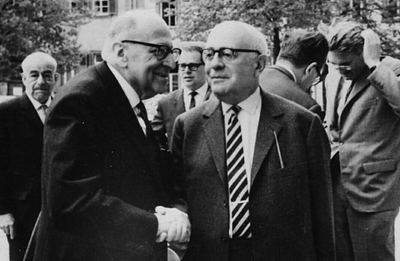
Frankfurt
School theorists emphasized that Marx was attempting to create a new
kind of critical analysis oriented toward the unity of theory and revolutionary practice
rather than a new kind of positive science. Critique, in this Marxian
sense, meant taking the ideology of a society — e.g. the belief in individual freedom or free market under capitalism — and critiquing it by comparing it with the social reality of that very society — e.g. social inequality and exploitation.
Frankfurt School critical theory centres principally on two works: Adorno and Horkheimer’s Dialectic of Enlightenment (1944) and Adorno’s Minima Moralia (1951). The
authors wrote both works during the Institute’s exile in America. While
retaining much of a Marxian analysis, in these works critical theory
shifted its emphasis.
The critique of capitalism turned into a critique of Western civilization
as a whole, making Marxist an even more powerful tool for the Messianic
agenda. This new brand of Marxism provided not only means to control
the masses but ways to destroy the social values underlying traditional
Aristocratic society and therewith destabilize nearly every pillar of
Western society step by step from within.
Psychoanalysis and crowd control
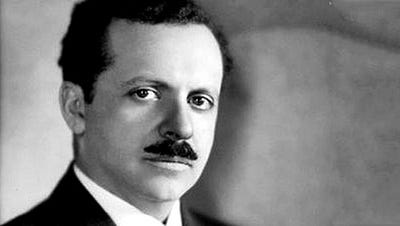
Early
sociological publications like Gustave Le Bon’s “The Crowd: A Study of
the Popular Mind” (1895) and Wilfred Trotter’s “Instincts of the Herd in
Peace and War” (1916) provided the necessary insights for social
engineers to develop revolutionary techniques that gave the new
aristocrats unprecedented control. The most influential of these social
engineers was Edward Bernays, who combined the ideas of Le Bon and
Trotter with the psychoanalytical ideas of his uncle, Sigmund Freud. By
the end of the ‘20s, control of the masses without their knowledge had
become a real possibility.
The conscious and intelligent manipulation of the organized habits and opinions of the masses is an important element in democratic society. Those who manipulate this unseen mechanism of society constitute an invisible government which is the true ruling power of our country. We are governed, our minds are molded, our tastes formed, our ideas suggested, largely by men we have never heard of. This is a logical result of the way in which our democratic society is organized. Vast numbers of human beings must cooperate in this manner if they are to live together as a smoothly functioning society.
[ … ]
In almost every act of our lives, whether in the sphere of politics or business, in our social conduct or our ethical thinking, we are dominated by the relatively small number of persons [ … ] who understand the mental processes and social patterns of the masses. It is they who pull the wires that control the public mind, who harness old social forces and contrive new ways to bind and guide the world.
[ … ]
Propaganda is the executive arm of the invisible government.
[ … ]
If we understand the mechanism and motives of the group mind, it is now possible to control and regiment the masses according to our will without them knowing it.— Edward Bernays , Propaganda (1928)
The merger of Marxism and Capitalism
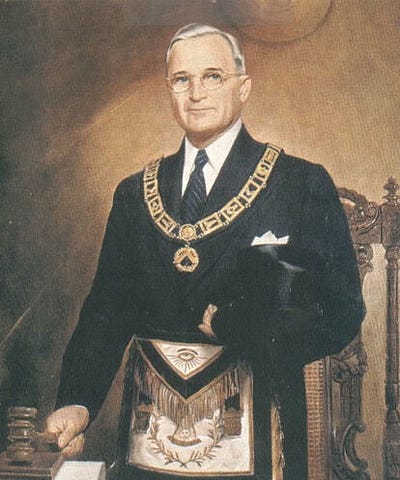
The
only major opposition to the Shadow government were the Fascist
movements that started popping up everywhere in the West during the
first half of the 20th century. This is especially true to the
National-Socialist movement in Germany and other movements inspired by
them. However, one World War and decades of propaganda have made these
movements harmless since the 1940s.

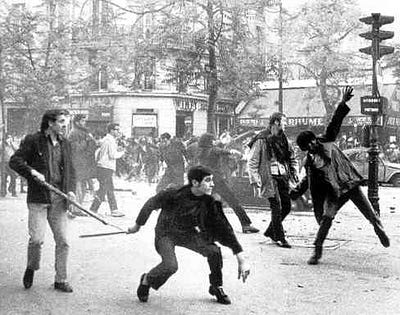

In February 1950, US senator Joseph McCarthy
rose suddenly to national fame when he asserted in a speech that he had
a list of “members of the Communist Party and members of a spy ring”
who were employed in the State Department. This resulted in a new “Red Scare” and an obsession with Communist indoctrination known today as “McCarthyism”,
was a widespread social and cultural phenomenon that affected all
levels of society and was the source of a great deal of debate and
conflict in the United States. Infamous are the Hollywood blacklist, associated with hearings conducted by the House Un-American Activities Committee (HUAC); and the various anti-communist activities of the Federal Bureau of Investigation (FBI) under Director J. Edgar Hoover.
Meanwhile
in Europe, Capitalists and Marxists gradually overcame their
differences. Marxist unions and political parties had reconciled with
Capitalist organisations and gradually integrated with the bourgeois
political system and European economy had integrated several “Socialist”
concepts to “protect employees from their employers”.
While
the US economy remained strictly capitalist, it did gradually adopt
many other Marxist ideas during the ‘60s through the influence of
members of the Frankfurt School who had fled to the US during WW2. At
the same time, their teachings became increasingly integrated with the
teachings of Edward Bernays, which allowed Marxists to keep a more
covert profile as they indoctrinated the American youth.
This
new, covert Marxist strategy started a new social revolution at the end
of the 1960s, after which the US started following the European example
of integrating Capitalist and Marxist ideas and indoctrinating the
masses with covert Marxist propaganda at an increasing pace until this
very day. Also, Marxist strategies had made a radical shift from
economic to social issues on a global scale.
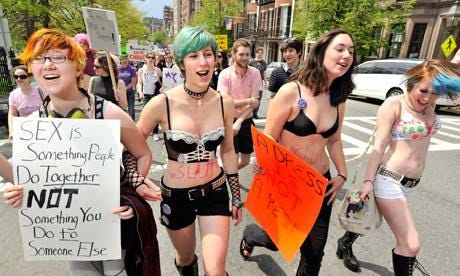
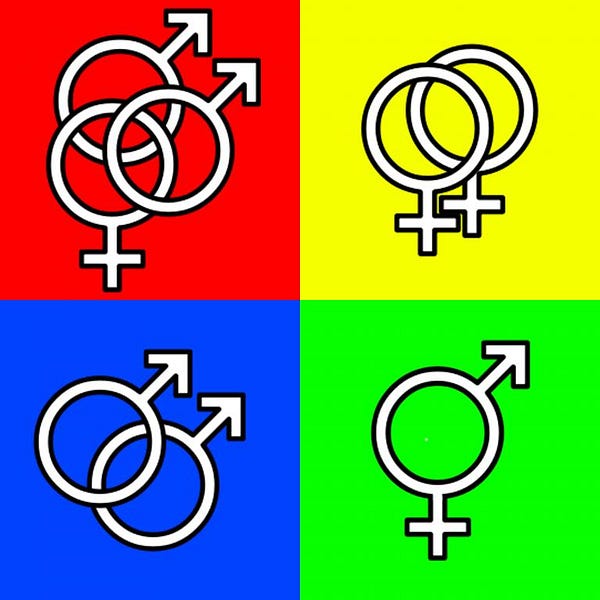
Since
the ‘70s, the cold war can therefore no longer be understood as a
struggle between Capitalism and Marxism as it was in the McCarthy
period. Since the ‘70s, it had turned into a cultural war between two
brands of Marxism: Orwellian Revolutionary Marxism (aka Bolshevism) in the East versus Huxleyan
Evolutionary Marxism (aka Menshevism) in the West. It didn’t take long
for Marxists to realize that the latter was far more succesful.
The
age we live in today is not an age that overcame Marxism, but an age
that overcame Bolshevism. It’s not Capitalism but a modern variation on
Menshevism that thriumps in the Western world today… in its many modern
incarnations. And, most importantly: these neo-Menshevik ideologies have
no other purpose but to destabilize Western society to preserve and
increase the power of the Rothschild dynasty as the head of a covert
Aristocracy behind the veils of fake democracy.
It is useless to deny that grave Jewish problems existed in Germany. The nation was in the unfortunate geographical position of being the first stage in the perennial push westward of the Polish Jews. Unless forced on, they tended to stop in Berlin and Hamburg, where they obtained an unduly share of good professional positions.
In Berlin, for example, when the Nazi came to power, 50.2 percent of the lawyers were Jews. In medicine, 48 per cent of the doctors were Jews, and it was said that they systematically seized the principal hospital posts. The Jews owned the largest and most important Berlin newspapers, and they had made great inroads on the educational system.— Stephen H Roberts, 1937, The House That Hitler Built
But it remained for the Jews, with their unqualified capacity for falsehood, and their fighting comrades, the Marxists, to impute responsibility for the downfall precisely to the man who alone had shown a superhuman will and energy in his effort to prevent the catastrophe which he had foreseen and to save the nation from that hour of complete overthrow and shame. By placing responsibility for the loss of the world war on the shoulders of Ludendorff they took away the weapon of moral right from the only adversary dangerous enough to be likely to succeed in bringing the betrayers of the Fatherland to Justice.
All this was inspired by the principle—which is quite true within itself—that in the big lie there is always a certain force of credibility; because the broad masses of a nation are always more easily corrupted in the deeper strata of their emotional nature than consciously or voluntarily; and thus in the primitive simplicity of their minds they more readily fall victims to the big lie than the small lie, since they themselves often tell small lies in little matters but would be ashamed to resort to large-scale falsehoods.
It would never come into their heads to fabricate colossal untruths, and they would not believe that others could have the impudence to distort the truth so infamously. Even though the facts which prove this to be so may be brought clearly to their minds, they will still doubt and waver and will continue to think that there may be some other explanation. For the grossly impudent lie always leaves traces behind it, even after it has been nailed down, a fact which is known to all expert liars in this world and to all who conspire together in the art of lying.— Adolf Hitler, 1925, Mein Kampf
It is untrue that I or anyone else in Germany wanted war in 1939. It was wanted and provoked solely by international statesmen either of Jewish origin or working for Jewish interests. I have made too many offers for the limitation and control of armaments, which posterity will not be cowardly enough always to disregard, for responsibility for the outbreak of this war to be placed on me. Nor have I ever wished that, after the appalling First World War, there would ever be a second against either England or America. Centuries will go by, but from the ruins of our towns and monuments the hatred of those ultimately responsible will always grow anew against the people whom we have to thank for all this: international Jewry and its henchmen.
Only three days before the outbreak of the German-Polish war I proposed a solution of the German-Polish problem to the British Ambassador in Berlin — international control as in the case of the Saar. This offer, too, cannot be lied away. It was only rejected because the ruling clique in England wanted war, partly for commercial reasons and partly because it was influenced by the propaganda put out by international Jewry.
I have left no one in doubt that if the people of Europe are once more treated as mere blocks of shares in the hands of these international money and finance conspirators, then the sole responsibility for the massacre must be borne by the true culprits: the Jews. Nor have I left anyone in doubt that this time millions of European children of Aryan descent will starve to death, millions of men will die in battle, and hundreds of thousands of women and children will be burned or bombed to death in our cities without the true culprits being held to account, albeit more humanely.— Adolf Hitler, 1945, Political Testament
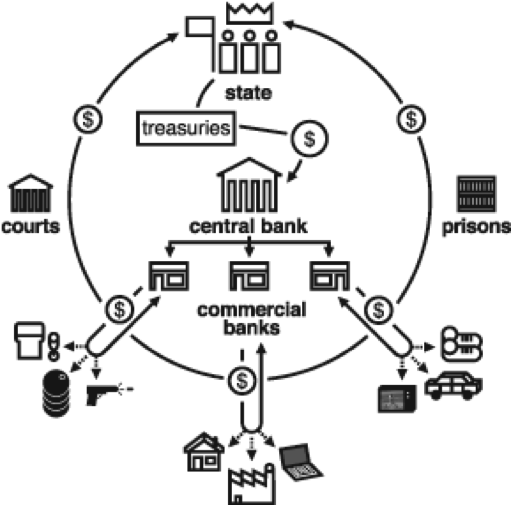
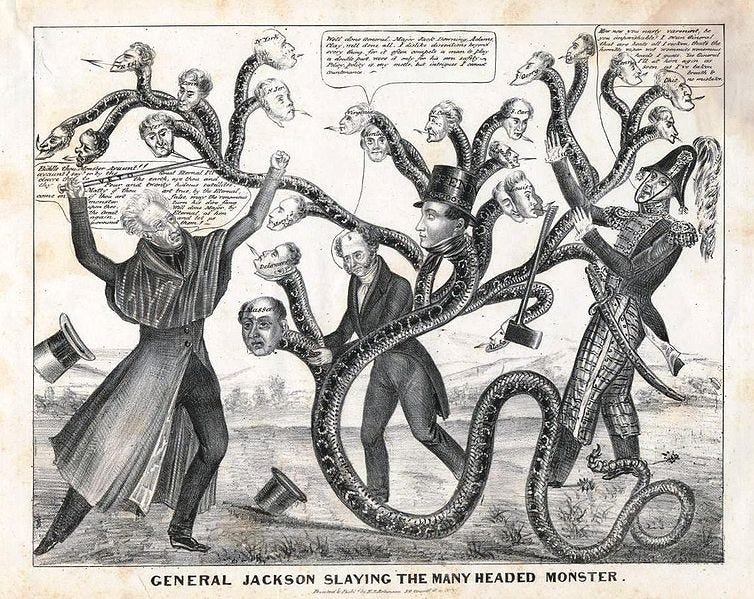

Freemasonry : a Jewish Luciferian Cult. [ a rare daring Investigation ]
The Relationship between Judaism & Freemasonry
Translator’s Note:
The
relationship between Judaism and Freemasonry is one of the aspects of
the Masonic question which Julius Evola investigated in a series of
articles published in La Vita italiana from 1937 to 1942. “Sui Rapporti fra ebraismo e massoneria” was signed “Gherardo Maffei.”
For that matter, besides, it must be acknowledged that researches of this kind are not easy, not only because they concern organizations more or less surrounded with secrecy and mystery, but also, and especially, because in this respect what comes into play is not so much these organizations in themselves, as political semi-secret societies, as the even more subterranean influences upon which they directly or indirectly depend, whether they know it or not. This is why we are not to be blamed, in developing a few brief considerations on this subject, for sticking to an inductive plane and seeking to reach something positive in the order of ideas rather than in that of the actual facts.
The problem of the relations between Masonry and Judaism shows three main aspects : the first, doctrinal, the second, ethical, and the third, political.
To start with the first, it is widely believed that a Jewish influence was at work in Masonry, right from its origins, since a great part of Masonic ritual and symbolism contains elements coming from Jewish tradition, whether biblical or kabbalistic. The symbolism of the Temple of Solomon is central in Masonry, so much so that, in some Nordic lodges, the Great Master bears the title of Vicarius Salomonis. The six pointed star, also called ‘Seal of Solomon’, is found among the main Masonic emblems. The legend of Hiram, to which we shall return, is of Jewish origin, just as, undeniably, are many of the “pass-words” of the various Masonic degrees, such as, for example, Tubalcain, Shibboleth, Giblim, Jachin, and Boaz.
As for the character to whom a decisive role is attributed in the organization of the inner aspect of Anglo-Saxon Masonry — namely Elias Ashmole — he was a Jew.
If all this is undeniable, and if many other elements of the same kind can be added, yet what follows is to be noted. First, besides these elements, there are many others in Masonic symbolism, which refer to non-Jewish traditions — Pythagorean, Hermetic, and Rosicrucian — and secret elements of medieval guilds, especially that of the “builders.” In the second place, Jewish elements themselves refer to the plane of a sort of esotericism which, as kabbalah, was always regarded with suspicion by Talmudic orthodoxy, which lies at the center of actual Judaism.
Finally, it must be pointed out that, if the fact of having borrowed elements from the Jewish tradition was enough for an accusation, then the accusation against Masonry could easily be extended to Christianity itself ; and such is in fact the path followed, quite consistently, by radical racist anti-Semitism, in connection with which it was rightly said that anti-Semitism follows the trajectory of a boomerang : leveled originally against Jews by the Church, anti-Semitism threatens to turn against the latter because of what Semitic elements it retains. But the most decisive argument in this connection is that, whenever we talk about genuine esotericism and symbolism, we are on a virtually metaphysical plane, on which, in their fundamental principles, all traditions converge and the contingent and human aspect of each of them is not very important. The Judaism which is rightly fought by national revolutions has nothing to do with this plane : its “occult” aspect is of a very different nature. It is true that we can legitimately wonder why Masonry has favored specifically Jewish symbols, and, then, it can also be wondered whether the use, even unconscious and purely formal, of certain rituals and certain formulae linked to a given tradition, does not amount to establishing, invisibly, relations with determinate “influences” inseparable from the people to which this tradition is peculiar. If this latter problem is more important than many people assume, it is nevertheless clear that its study would involve considerations of a “technical” character which cannot find room here and would require notions which are certainly foreign to the majority of our audience. Besides, any possible conclusions in this connection would have to find, as proofs, their counterpart in the order of facts; something which comes down, basically, to defining directly the relations between Judaism and Masonry on the other, more conditioned and more exterior, planes.
Thus, as far as the first point is concerned, Freemasonry is hardly incriminated simply because it has a Jewish component. Besides, we have shown in our previous article that all which is “esotericism” in Masonry, when it is not reduced to a dead “ceremonial” superstructure, has undergone an inversion which has completely destroyed or perverted its original spirit. In modern Masonry, what matters is above all its politico-social ideology and the pathos which is related to it. Thus, we come to the second aspect of the problem, which is to see what there may be in common, in this respect, between Masonry and Judaism.
We have already mentioned the legend of Hiram. Hiram is a character who appears in the Bible (as Adoniram), but features more prominently in the Talmud. In Masonry, he is conceived of as the builder of the Temple of Solomon, treacherously assassinated by his three companions, who wanted to drag the secret of the art of builders out of him and hide away the corpse. Any Mason admitted at the ceremony of the third grade is seen as Hiram found again, which is to say reborn, who through this rebirth, rises to the dignity of Master of the sect. According to some (Ragon, Reghini), there is here a correspondence with the symbolism of classical, Eleusian, Dionysian, initiations.
This is a tendentious comparison, which, in any case, can be valid only to the extent that those ancient initiations were subject to Asian, Jewish, or Levantine influence. The pathos of the predestined victim and of the wait for his rightful rebirth are specifically Semitic elements: they have pervaded the “chosen people” pandemically from its fall on. This figure of Hiram, central in Masonry, cannot but make us think of the mysterious character who, in the so-called Kahal, and in a certain Zionist international Judaism, is called “the Prince of Slavery,” and conceived of as the supreme Master in the period which still separates Israel from its new “kingdom.” But, even more generally, it can be recognized that legends like that of Hiram offer great scope for the development of humanitarian and at the same time rebellious views; and, in this domain, the meeting between Judaism and Masonry is undeniable and almost reaches identity. This is the basis according to which Masonry has often appeared to Jews as a complement of the Jewish Law, if not in fact as the active instrument of their messianic hope — naturally, duly secularized, democratized, and materialized.
The Mason Otto Hieber wrote verbatim in his “Leitfaden durch die Ordenslehre der grossen Landloge von Deutschland”: “The Master taught us to love each man as a brother, and the Jew is, as we are, a son of God. The more our credo of the assertion of human rights advances, the more the Jewish problem will be ameliorated, whereas, with the oppression of the Jew, our higher principle will be infringed.” The exact counterpart is found in Jewish statements, as, for instance, this one: “Israel only wants social justice. The court, the army, the hereditary aristocracy are unbearable to it. The idea of fatherland is for it the idea of justice, and the idea of justice is social equality.” Israel tirelessly carries out “its historical mission of redeemer of the freedom of peoples, of collective Messiah of human rights” in favor of the “egalitarian and leveling (sic) regime of the republics — obviously of true republics, not of bourgeois republics” (Elias Eberlin, “Les Juifs d’aujourd’hui,” p.136, p.143, p.153). And if we know that all this applies most exactly to Masonic ideology and action, words like these should not come as a surprise: “The spirit of Masonry is the spirit of Israel in its most fundamental conceptions: it is its very ideas, its very language and practically its organization” (Vérité Israélite, cf. de Poncins, p.243).
Readers of the previous article in this series have already got to know documents which prove irrefutably the convergence between the League of Nations idea and the Masonic action. Among the numerous related Jewish testimonies, here is one of the most significant: “The League of Nations is not so much a creature of Wilson as it is a great work of Judaism, of which we can be proud. The League of Nations idea is related to that of the great prophets of Israel. Isaiah once said that swords will have to give way to plowshares and that never again will one people have to fight another. It is to this ancient order of Jewish ideas that the League of Nations brings us back. Its origin lies in the world-outlook of the prophets, pervading the whole world with love. Thus, the idea of the League of Nations, the fraternity of peoples, is a pure Jewish heritage” (cf. Fritsch, p.202). If the Masonic International Congress of Paris in 1907, with which the aforementioned article dealt (1), listed among the real objectives of world war, besides the constitution of the League of Nations, the necessary destruction of imperial and monarchic forms still existing in Central Europe, the Jews saw in the collapse of those “unbearable” forms (as the Jew Ludwig called them) an obstacle-clearing essential to the fulfillment of their policy (cf., for instance, the paper Der Jude, the January 1919 issue).
It is thus hardly surprising that Jewish elements have flowed to the ranks of Masonry and have done everything they could to turn it into one of their most powerful instruments of work. The extremist hypothesis, according to which Jews created Masonry in all its parts with the occult domination of the world in mind, cannot, in our opinion, be taken seriously. However, it must be conceded that, in the Jewish international on one hand, and in the modern political form of Masonry on the other hand, extremely closely related influences manifest themselves and, on this basis, as Masonry became more and more directly aligned to subversive and anti-hierarchical humanitarianism, Judaism was to enjoy in the sect a part which was perhaps more important than profane or even high-ranking Masons could suspect. Already in 1848, Baron von Knigge, member of a German Masonic lodge which, until relatively recent times, like some English lodges, had a conservative character, decided to denounce the danger of Jewish infiltration into Masonry, warning that “the Jews saw in Masonry a means to strengthen their movement towards a secret kingdom” (2). In 1928, in an enthusiastic speech on Masonry, rabbi M. J. Merrit said: “No place can be more fit for the Masonic cult than this one: since Masonry is inseparable from the history of the people to which this temple (a Jewish temple) belongs: Masonry is born, really, of Israel.” This statement from another Jewish source, quoted by Vulliaud, is just as significant: “The hope which supports and strengthens Masonry is that which enlightens and confirms Israel on its painful way, by showing the inevitability of its future triumph. What is the advent of messianic times if not the solemn notice and the definitive declaration of the eternal principles of fraternity and love, the association of all hearts and all efforts, the crowning of this wonderful house of prayer of all peoples whose center and triumphant symbol Israel will be?” As always, this Jewish declaration of love is quickly echoed by Masons. Apparently on the basis that the Jewish church does not have dogmas, but symbols, just as does Masonry, the Masonic paper “Acacia” (3) once stated, for instance: “This is why the Israelite church is our natural ally, this is why it supports us, this is why a great many Jews militate in our ranks.”
Here we reach the more decisive point for our problem, the interpretation of which will nevertheless vary according to one’s ideas regarding the real influence of Judaism and its goals, if indeed one can speak at all of goals in the sense of a unitary international plan. To establish statistically what percentage of Jews there are in the ranks of Masonry, in this respect, is not important, because it is well-known that Jewish tactics, like those of any concealed power, are not to assert their presence by force of numbers, but rather through an opportunistic infiltration which allows them to gain control imperceptibly, from above and from behind the scenes, of all the vital organs of a given organization: and a study along these lines, by the nature of things, is doomed to get bogged down in the imponderable. The convergence of Masonry and Judaism exhausts itself more or less on the plane of “elective affinities,” since the Jew spontaneously supports any liberal, democratic and internationalist idea, simply because owing to its condition no people has more to gain than his from the triumph of ideologies of that kind, and from the elimination of any hierarchical, authoritarian, national, and traditional order. Besides, the age-old resentment of the Jew against Catholicism goes perfectly with the Masonic hatred against Rome and with the symbol of a temple which bears a Jewish name which, in the final analysis, has the signification of a rallying point for the forces of an international front hostile to supranational Catholic authority.
However, things appear differently if one considers that the destructive influence exercised, either calculatedly or instinctively, in so many domains by many Jewish elements does not exhaust the true and secret goals, but, precisely according to the myth of the famous “Protocols,” is only preliminary to further enterprises perfectly known by the leaders of international Jewry — if those leaders exist — that is, immanent, so to speak, in the “spirit” of Israel. In fact, it is unnecessary to refer to the most controversial “Protocols”: many positive declarations can arouse similar suspicions, and, for example, it may be enough to recall the words which Baruch Levi wrote to Karl Marx, which are not well-known and are worth quoting : “The Jewish people, as a whole, will be its own Messiah. Its domination on the world will be achieved by the union of the other human races, through the elimination of frontiers and of monarchies, which are the ramparts of particularism, and through the formation of a worldwide republic, in which the Jews will enjoy their rights everywhere. In this new organization of humanity, the sons of Israel, who are now scattered throughout the world, will be able, without obstacles, to become everywhere the leading element, especially if they manage to place the working masses under the control of certain of their own number. The governments of the peoples constituting the worldwide republic, with the help of the proletariat, without this requiring any effort, will all fall into the hands of the Jews. Private property can then be subject to rulers of Jewish origin, who will control the state goods everywhere. Thus, the promise of the Talmud will be fulfilled, according to which Jews, when the time comes, will possess the keys of the wealth of all the peoples of the world (cf. Revue de Paris, 35, 11, p.574).
That the true Jew is as anti-traditional, with respect to the other peoples of the milieu in which he is, as he is tenaciously attached to what is peculiar to his people and to his tradition, is as singular a paradox as it is instructive. The question therefore is whether the humanitarian and democratic sermons of Judaism are only forms of well-thought-out hypocrisy, in the sense that the freedom dreamt of by the Jew within the leveled and fraternalistic world of the Masonic-liberal ideals, and such milieus, would not correspond to the intention of the Jews to melt and vanish into this subnational pulp, but that this freedom would be instead the necessary condition for an unchecked action, aiming at the affirmation of Israel and at the reversal, in favor of this people, of the relations of subordination which it detested so much in the anti-liberal, traditional world. The fact is that everywhere the Jews were given a free hand, they managed to rapidly attain important positions of command in public life while never ceasing to keep in touch with each other with the tenacious, mutualistic solidarity of a sect. Is it possible — as a mathematician would put it — to “extrapolate” the significance of that fact, and to interpret on this basis the general action of liberal-democratic Judaism? It is certainly a serious question. It amounts to asking whether, behind Judaism as an anti-tradition, more or less linked to any given subversive movement of our epoch, there is a Judaism as tradition, the two being in the same relation with each other as an army is to its clear-minded headquarters. If it was so, we could share the conviction expressed by an expert on Freemasonry, Schwartz-Bostunitsch, in saying : “The secret of Masonry is the Jew.” Here, once again, we do not want to fall into mythology, but only to refer to possible invisible connections which, in the dynamism of the deepest forces of history, may be decisive to the ultimate signification of determinate collective currents, especially when these are not devoid of ritual evocations and reproduce a facsimile of hierarchy, without the energies organized this way having a solid point of reference in visible leaders.
From the practical point of view, it is obvious, whatever the case may be, that one hypothesis leads to the same consequences as the other. Politically and socially, Masonry and Judaism combine into one and the same campaign, against which it is good to fight, whether by doing so one fights simply a humanitarian, leveling utopianism, having its principle and its end in itself, or whether, on the other hand, one may by doing so paralyze one of the main instruments in the service of the occult will-to-power of a race which is not ours, and whose triumph, visible or invisible, could only mean the decline of the highest heritage of the best Indo-European civilization.
Notes
1) “Società delle Nazioni: superstato massonico” (“League of Nations : a Masonic Superstate”).
2) Evola must be mistaken, since von Knigge lived in the eighteenth century, not in the nineteenth, as was pointed out by Renato del Ponte. Evola mixed up dates, but this doesn’t mean that he was wrong in attributing to von Knigge this warning against the “infiltration” of Jewish elements into Freemasonry. As a matter of fact, he was initiated into Masonry in 1773, and Weishaupt convinced him later on to join the notorious sect of the Illuminati, which is arguably the core of Masonry, and which he left suddenly in 1784 because of a disagreement with the latter. Now, to listen to Henry Wilson Coil (Coil’s Masonic Encyclopedia, 1961), like many of the “noblemen (who) were found in abundance in the most fraudulent orders in Germany claiming some Masonic connections,” von Knigge “showed little interest in Freemasonry” after his initiation. After all, he wouldn’t have been the first German nobleman or intellectual to realize the harmful nature of Masonry only after having joined it. It is true that, as recalled by Dieter Schwarz, Goethe was raised in 1782 to the Degree of Master and accepted into the Inner Order, but, “By the end of 1782, the Weimar lodge closed its doors due to quarrels which broke out, due to the confusion of lodges, among the lodge brethren. Goethe’s later opinion of Freemasonry is shown by a report written by Goethe in his capacity as Minister Of State to Prince Karl August, when the lodge brothers in Jena filed an application for reinstatement of their lodge in 1807. In it, he stated: Freemasonry creates a State within a State. Wherever it is already present, the government should attempt to rule it and make it harmless. To introduce it where it has not existed is never advisable. Admittedly, in small towns, such as Rudolfstadt for example, such an organization serves a sort of social purpose. Here in Weimar we really don’t need it, and in Jena I consider it dangerous, on the grounds mentioned above and on several others as well. Anyone who could imagine in detail the likely composition of the lodge six months after confirmation would consider the matter distressing.” “That Goethe was not the enthusiastic lodge brother so blithely depicted by the Freemasons is openly admitted by the well known Masonic reference works, General Handbook Of Freemasonry and International Lexicon Of Freemasonry.” “Frederick The Great took part in no lodge meetings after the first year of his reign (1740), and adopted a critical position against various lodge activities during the last years of his life, wishing them to function as bourgeois social associations only (see his letter of 1779 against the application for titles by Freemasons). Lessing and Fichte left the lodges in anger. The Stolberg brothers quit, and Herder, who entered a lodge in Riga in 1766, never acknowledged himself as a Mason in Weimar.” So, why on earth did they join Masonry in the first place? Schwarz gives a plausible explanation: “The humanitarian ideal of antiquity had already been fundamentally misunderstood and distorted by Christianity. Now we see Freemasonry take over the same concept and turn it into an ideology denying all nations and races, in crass contradiction to the racially based concepts of antiquity. In the doctrinal declarations of Freemasonry, insofar as any were issued, this contradiction was, at any rate, not very obvious. To the enlightened spirits of the time, Freemasonry must have appeared to be an ideal merger of the best. This is why Frederick the Great, Goethe, Herder, Klopstock, Fichte, Lessing, and many others entered the temples of the lodges.” One may argue that the true ideal of antiquity was not a “humanitarian” one, and they were thus victims of their own illusions in entering Masonic lodges. However, they soon realized their mistake, unlike Potocki and many other figures of a European nobility which, in its combination of Enlightenment rationalism and romantic thirst for anything syncretistically esoteric and generically oriental, that is, at the end of the day, in its immature cerebral search for exoticism in any form, deserves to be called “degenerate.”
3) Acacia is one of the main symbols of Masonry, as acknowledged in “Morals and Dogma” by none other than Albert Pike (whose writings, let’s bear in mind, are extracted to a large extent from the books of the French magician, Eliphas Levi): “Masonry still retains among its emblems one of a woman weeping over a broken column, holding in her hand a branch of acacia, myrtle, or tamarisk (…)”. The sprig of Acacia plays a central part in the third degree ritual; a sprig of Acacia is sometimes laid in graves or on caskets at Masonic funerals, and it is also seen on the 14th Degree cordon. As a matter of fact, in ancient Egypt, from which Masonry claims to have borrowed a large part of its imagery, the thorn of acacia was conceived of as a symbol of the birth-and-death mother-goddess Neith. In the Old Testament, from which Masonry also took much to add to the decoration of its lodges, the Acacia is said to have been used in the building of the Tabernacle (Exodus: 26) and of the Ark of the Covenant (Exodus: 37). According to some sources, the crown which Jesus-Christ wore on his crucifixion was made of acacia thorns, and his cross was made of acacia wood.
What is less well-known is that an acacia tree, or a cluster of acacia trees, is the symbol of Al-Uzza, an Arabic goddess who rules birth, death, marriage, warfare, raids, the Zodiac, the change of the seasons, the course of heavenly bodies, and Venus as the morning star. Green, her sacred color, was adopted by Islam as its own favorite color. Meteorites, such as, for instance, the black stone in the Ka’aba (“cube”), are her sacred stones. Al-Uzza received blood offerings, sacrifices of humans and animals. The acacia, as we have just pointed out, is her sacred tree. It is under an acacia tree that the companions of Muhammad took a pledge of fidelity (known as Ba’ait al-Ridwan — “Pledge of Good Pleasure”) to him the day before the signing of the Treaty of Hudaibiya, a treaty which brought about the political victory of Islam throughout Arabia.
Source: http://thompkins_cariou.tripod.com/id60.html
Related:
http://tradcatknight.blogspot.com/2016/03/tradcatknight-freemasonrynwozionism.html
http://tradcatknight.blogspot.com/2016/03/christian-zionism-is-monumental-lie-and.html
http://tradcatknight.blogspot.com/2014/07/fr-campbell-christian-zionism.html

